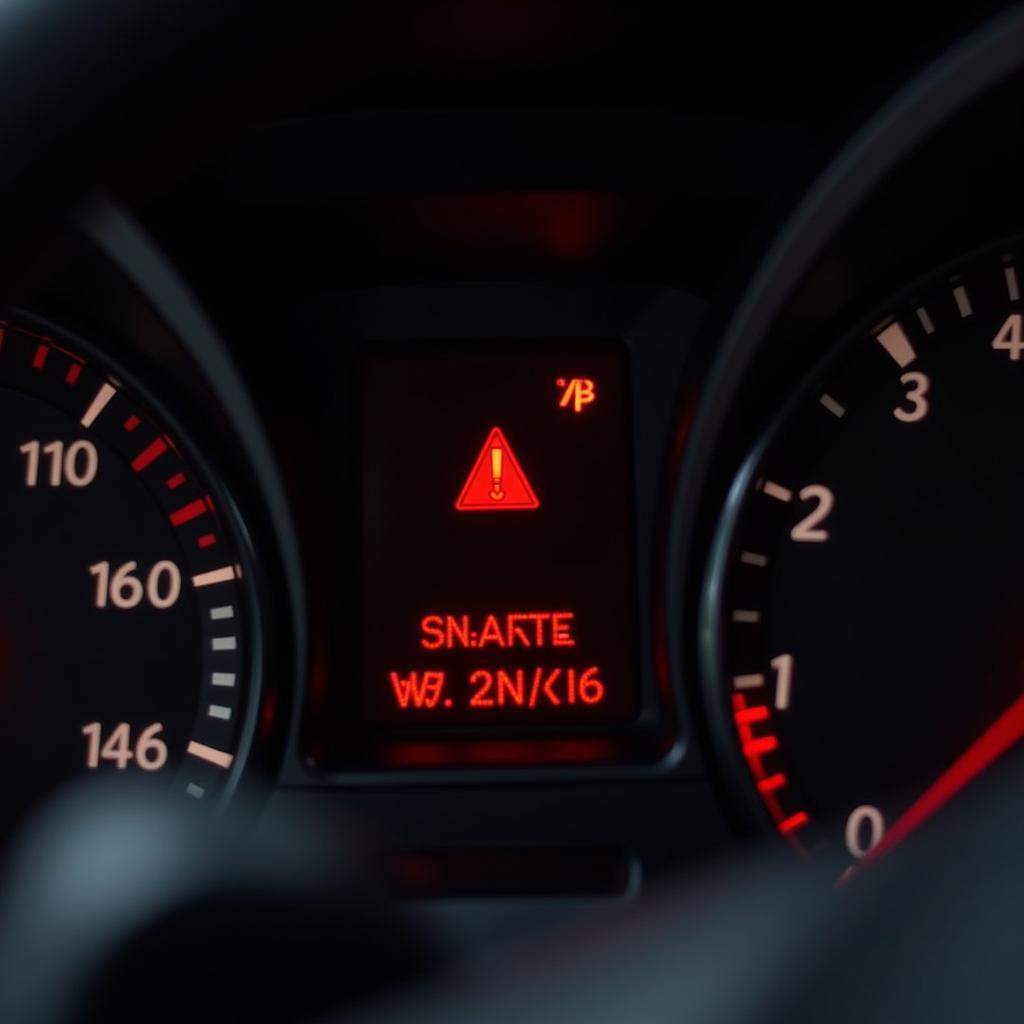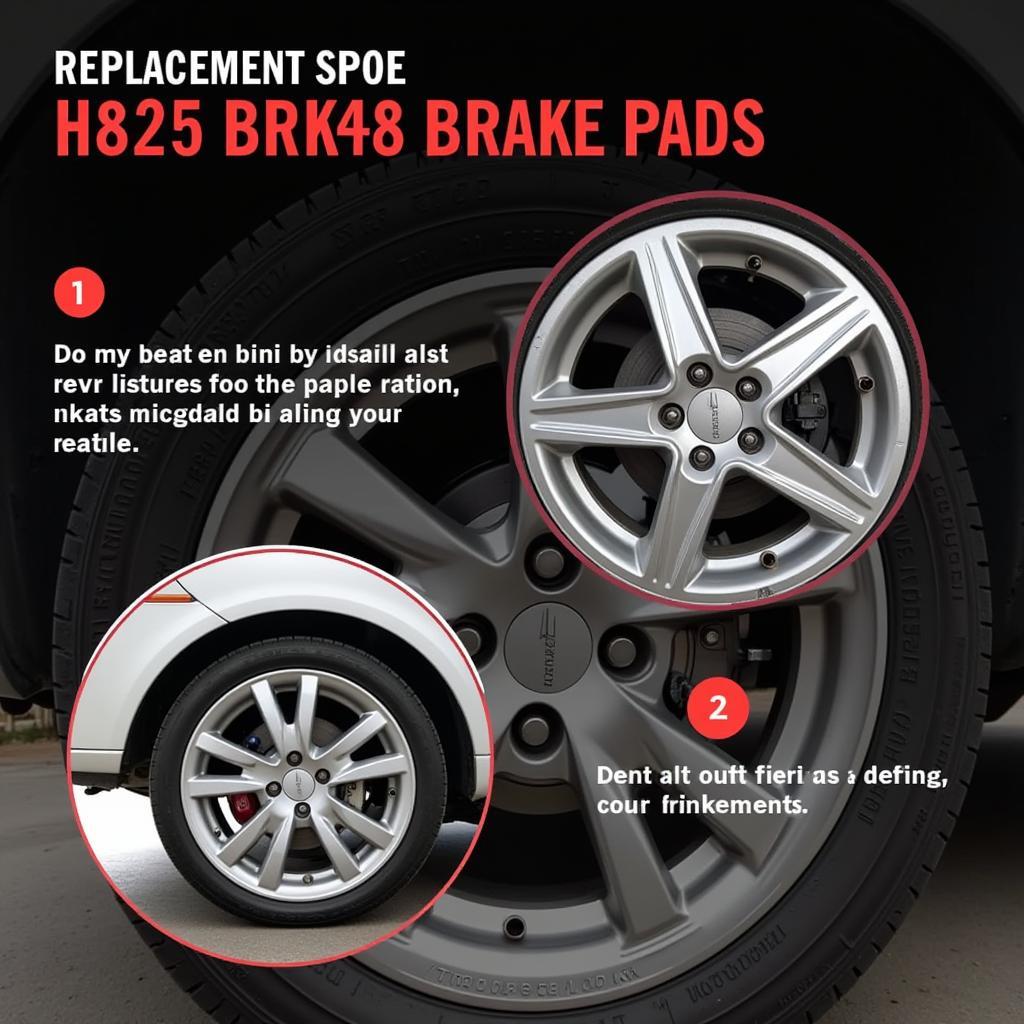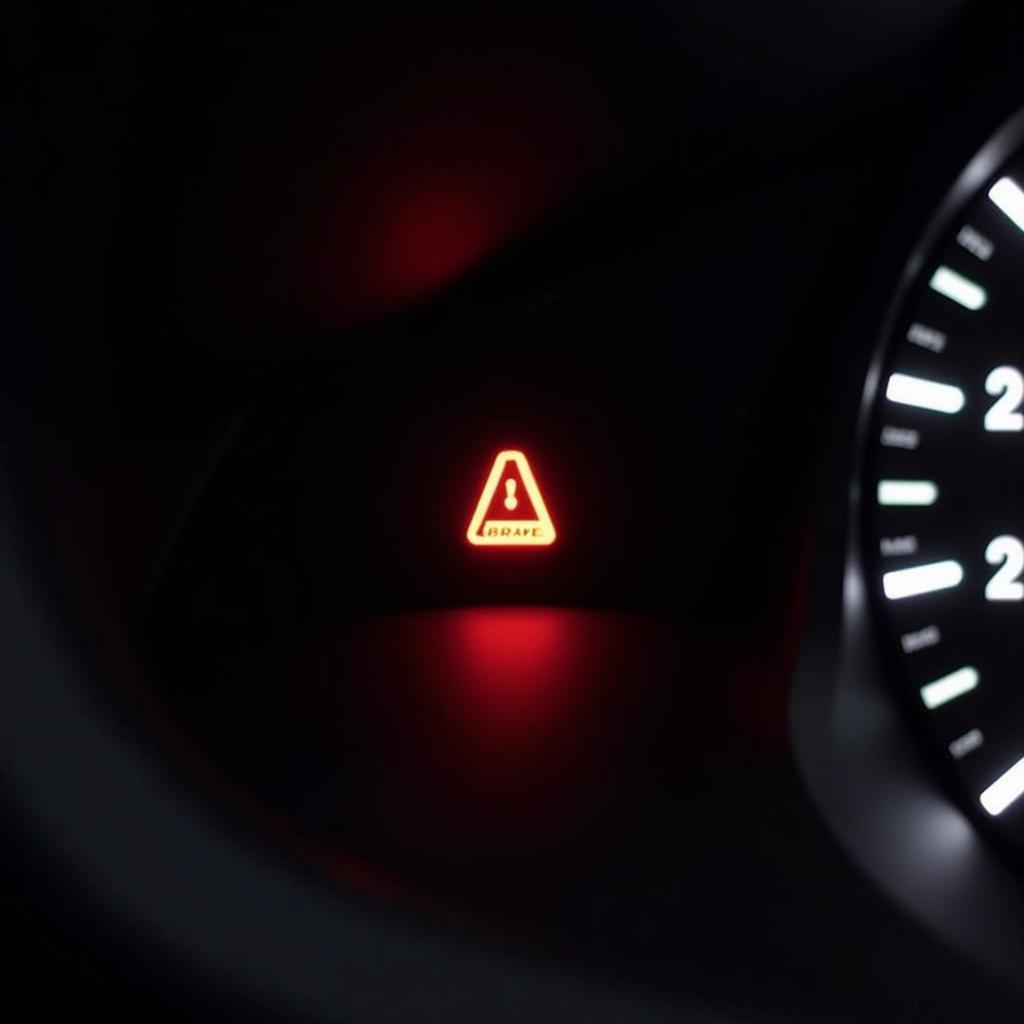Is your BMW’s brake warning light staring you down every time you turn on the ignition? Don’t panic, you’re not alone. A lit-up brake warning light on your 2016 BMW can be a real head-scratcher, but understanding the cause and knowing a few simple troubleshooting steps can save you a trip to the mechanic.
This guide will walk you through the common reasons for a brake warning light and provide you with potential solutions to get your BMW back on the road, warning-light free.
Decoding the Brake Warning Light
First things first, let’s understand what that glowing symbol on your dashboard is trying to tell you. The brake warning light can illuminate for several reasons, and knowing which one applies to you is the first step in resolving the issue:
- Worn Brake Pads: This is the most common culprit. Your BMW is equipped with brake pad wear sensors that trigger the warning light when the pads thin out and need replacing.
- Low Brake Fluid: Brake fluid is the lifeblood of your braking system. A leak in the system or low fluid levels can be dangerous and require immediate attention.
- Faulty Brake Light Switch: This switch activates your brake lights when you press the pedal. A malfunctioning switch can confuse the car’s computer, triggering the warning light.
- ABS Issue: If there’s a problem with your Anti-lock Braking System (ABS), the warning light might be your first clue.
- Electronic Parking Brake Fault: Many 2016 BMWs feature electronic parking brakes. A fault in this system can also trigger the warning light.
 BMW Dashboard Brake Warning Light
BMW Dashboard Brake Warning Light
Troubleshooting the Warning Light: A Step-by-Step Guide
Before you reach for the phone to call a tow truck, try these troubleshooting steps to potentially solve the issue yourself:
- Check Your Brake Fluid: Locate the brake fluid reservoir under the hood (refer to your owner’s manual for the exact location). The reservoir should have a “Min” and “Max” marking. If the fluid level is below the “Min” line, it’s time for a top-up.
- Inspect Your Brake Pads: Take a look at your brake pads through the spaces between the wheel spokes. If you see less than ¼ inch of friction material, it’s a clear sign that new brake pads are in your future.
- Check Your Brake Lights: Have a friend or family member press the brake pedal while you stand behind the car. Ensure all brake lights (including the third brake light) are working correctly. If not, the brake light switch might be the issue.
When to Call in the Professionals
If the troubleshooting steps above don’t resolve the issue or you’re not comfortable working on your car, it’s time to call in a professional mechanic. Issues with the ABS system, electronic parking brake, or brake fluid leaks are best left to trained technicians.
“Attempting to diagnose or repair complex brake systems without the proper knowledge and tools can be dangerous,” warns master BMW technician, Mark Stevenson. “It’s always best to err on the side of caution and seek professional help when dealing with brakes.”
Resetting the Brake Warning Light
Once you’ve addressed the underlying cause of the warning light, you may need to manually reset it. In some cases, simply fixing the problem will cause the light to turn off. However, certain issues might require a scan tool to reset the light or clear any stored error codes.
Keeping Your BMW’s Brakes in Top Shape
Preventing brake issues is always better than dealing with them after they arise. Here are some tips for keeping your BMW’s brakes in excellent condition:
- Regular Brake Inspections: Have your brakes inspected at least once a year, or more frequently if you drive in demanding conditions.
- Brake Fluid Flush: BMW recommends flushing the brake fluid every 2 years to maintain optimal braking performance.
- Quality Brake Pads: Invest in high-quality brake pads that are designed for your BMW model for optimal braking performance and longevity.
By understanding the common causes of a brake warning light on your 2016 BMW and following the suggested troubleshooting steps, you can tackle this common car issue head-on. Remember, when in doubt, don’t hesitate to call on a qualified mechanic to diagnose and repair any brake-related problems. Safe driving!


